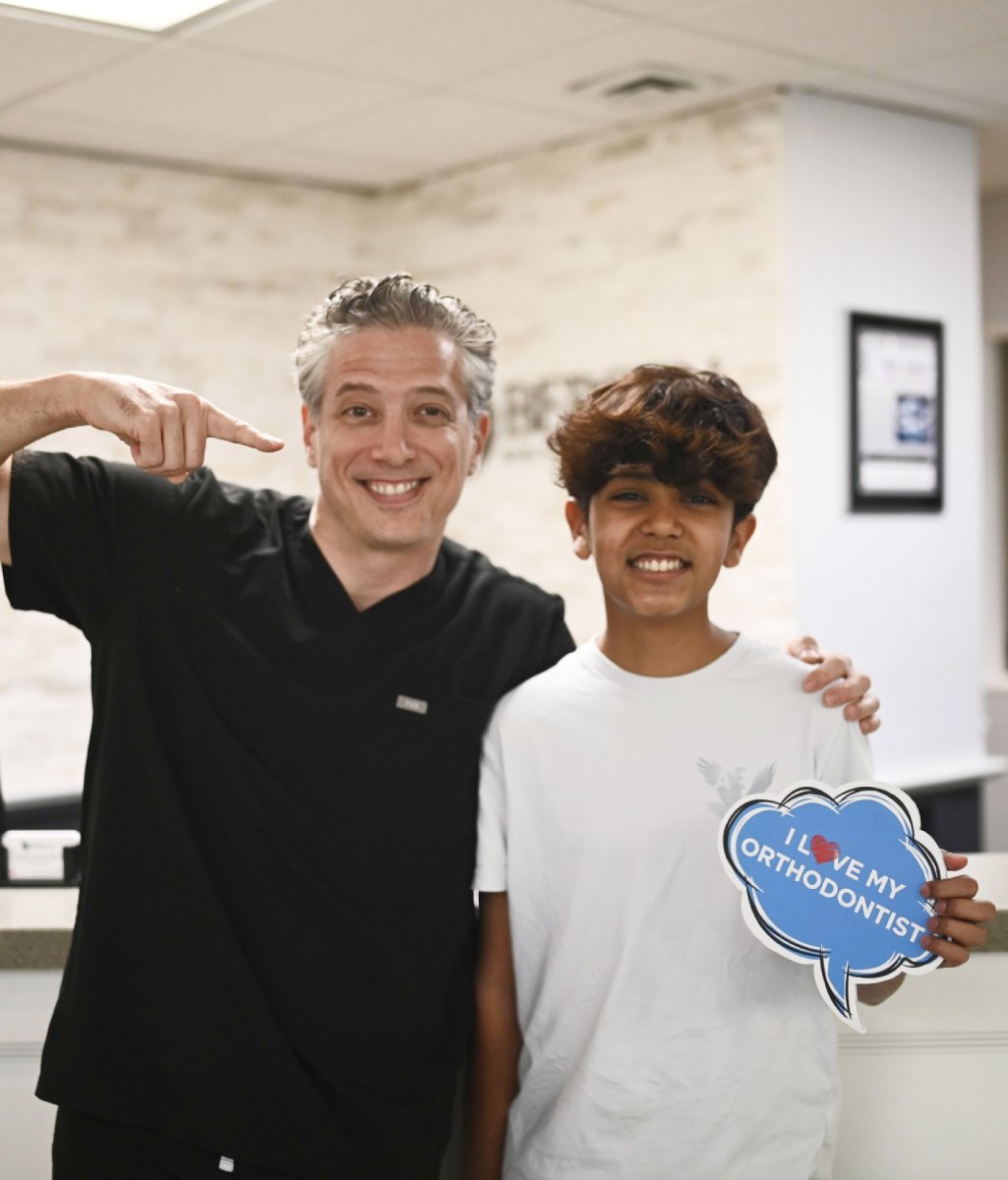Getting braces is a rite of passage for most children and teens (and even adults) in America, but many questions come with getting braces: How do you brush your teeth with braces on? Better yet, how do you floss? Do braces hurt when they’re on? There may seem to be many unknowns when diving into the world of braces, but don’t fret: all these questions have answers, and we are here to help you navigate them!
In this article, we’re going to explain why you need to brush and floss with your braces, the importance of good oral hygiene, and the simple steps you can take to ensure your oral health is as good as it possibly can be.
Maintaining Oral Hygiene with Braces: Essential Tips and Practices
The point of braces is to have a healthy mouth—don’t mess it up by getting cavities, tooth decay, and gum disease! Proper oral hygiene is paramount, especially when wearing braces.
Everyone should brush their teeth at least three times a day, but good oral hygiene is even more vital for braces patients. It is vital to have healthy teeth and prevent bad breath, cavities, and gum disease. Patients with braces are encouraged to brush three times a day after every meal.
Sometimes, that is hard to do, especially at school or work, so even just rinsing after lunch is a good stopgap until you get back to your toothbrush. Using mouthwash is encouraged, especially while in braces, too! Using an American Dental Association-approved fluoride mouth rinse in the morning and at night before bed will help your teeth and gums thrive.
Brushing with an electric toothbrush is arguably the most important thing to do to maintain good oral health and keep your braces nice and clean. Oral B is a great example of a reputable brand with models for kids and adults alike!
Getting kids used to an electric toothbrush when they’re young will help instill good oral hygiene habits early on. Using fluoride toothpaste is a great way to maintain good oral health.
How to Floss with Braces
Flossing is also crucial for keeping debris and cavity-causing plaque out of hard-to-reach places between teeth. The idea of flossing with braces may seem daunting, but using a Water Pik, floss threader, Platypus Flosser, or Superfloss can make it very easy to get in between the teeth and around the wires of the braces.
Flossing with braces is perfectly fine if you don’t have a Water Pik! A floss threader is a tool used to help get the floss in between hard-to-reach places, such as between teeth with braces. You can use the floss with your own fingers as well—just pull the floss under the wires between the teeth and floss away! If you are out and about and find yourself without floss, rinsing your mouth with water is helpful enough until you can get home and clean those spots properly.
Managing Broken Braces
One of the most pressing concerns about braces is what to do if/when they break. A bracket may come loose, or the wire could pop out if something excessively hard or crunchy is eaten. See our blog post for a more in-depth list.
Braces don’t break just from brushing your teeth, but always call the orthodontist should a break happen, or you start feeling pain from a poking wire. When a wire pokes, the orthodontist will routinely trim or bend the end for comfort. Sometimes early on in treatment, when more flexible wires are used, the end of the wire gets curled in behind the last tooth to prevent it from poking the inside of the mouth.
Broken brackets take a bit more time than just a poking wire. When a bracket is broken or feels loose on the wire, definitely always call the orthodontist to see what to do. Repairing brackets is a longer process because you have to open all of the brackets on the arch (the top or bottom of the mouth) and remove the entire wire. Then, you remove the broken bracket, clean and polish the tooth, and glue a new bracket back on. The wire then goes back into place, and the doors of the brackets are all closed!
Schedule Your Free Consultation Today!
Getting braces doesn’t have to be as intimidating as some make it out to be. It is a big responsibility to keep braces nice and clean, but luckily, there are now many different ways to help patients keep their teeth, mouths, and braces in tip-top shape! Schedule your free consultation today!



